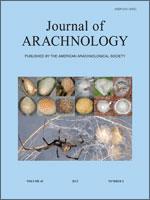With 30 species and a natural distribution in North America, 28 confined to Mexico, Physocyclus Simon 1893 is the most diverse genus within the pholcid spider subfamily Arteminae. This paper provides the first phylogenetic test of the genus's monophyly through a cladistic analysis of 54 morphological characters using equal and implied weighting. The equally weighted analysis found 12 most parsimonious trees, whereas the analysis with implied weights varying the concavity values (K = 6–10) found five or six most parsimonious trees. The monophyly of the genus Physocyclus is supported by three synaphomorphies: 1) the paired ventral apophysis on the anterior part of the epigynum; 2) the lateral constraints in the middle part of the epigynum; and 3) the arc of the uterus, with a single sclerotized projection on the anterior part. The genus Physocyclus contains two clades treated as species groups: the globosus group, with 11 species, and the dugesi group with 19 species. The species relationships within the globosus group were better resolved than those in the dugesi group. The globosus group has a biogeographical distribution pattern in the Mesoamerican and Mexican Mountain biotic components, whereas the dugesi group has a distribution pattern in the Mesoamerican and Continental Nearctic biotic components. Given the complex biogeography in Mexico, apparently a large-scale vicariant event separated the two major clades within the genus Physocyclus.
How to translate text using browser tools
1 August 2013
Morphological phylogenetic analysis of the spider genus Physocyclus (Araneae: Pholcidae)
Alejandro Valdez-Mondragón
ACCESS THE FULL ARTICLE

The Journal of Arachnology
Vol. 41 • No. 2
August 2013
Vol. 41 • No. 2
August 2013
Cladistic analyses
morphology
species groups




